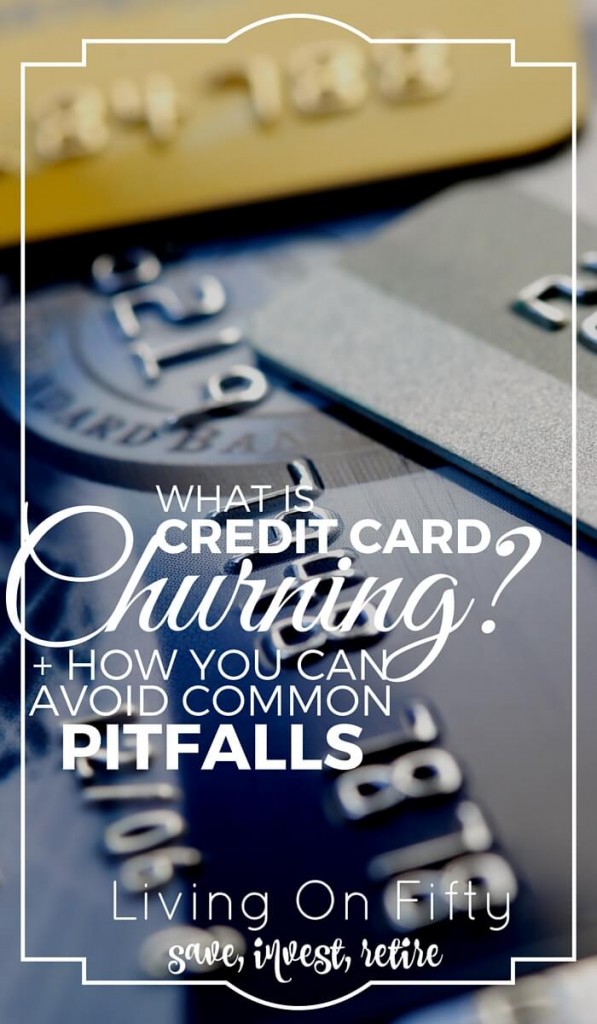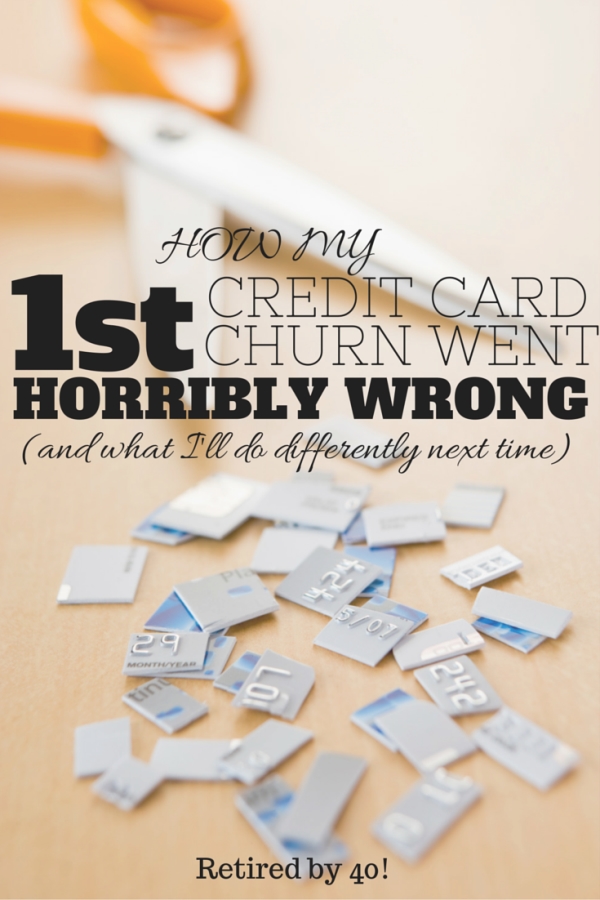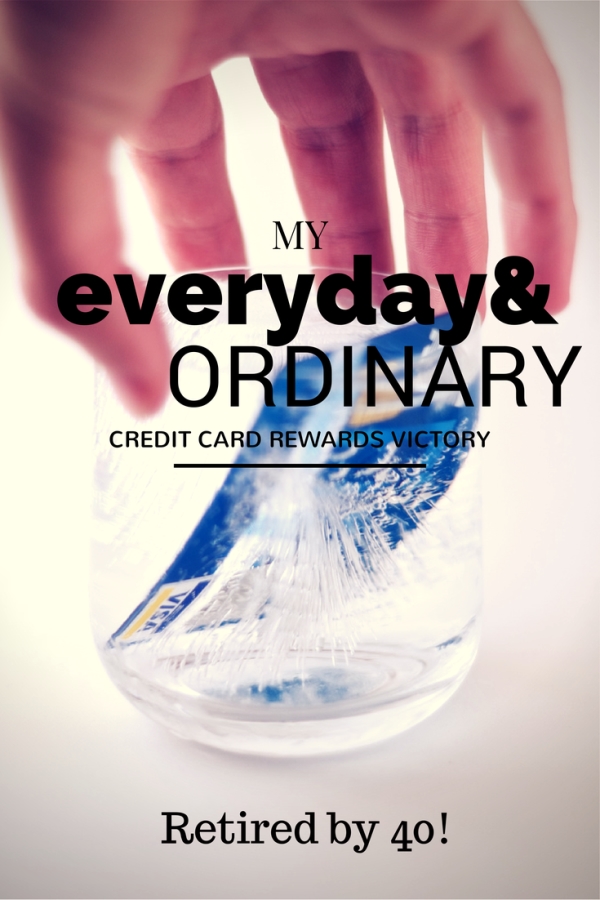Bloggers have been making a big splash lately with headlines like
“How I Spent Only $14,000 Taking $195,000 Worth Of Trips Around The World.”
And while I’m all for a good headline – backed up by GREAT content, of course – I feel like there’s some explanation that needs happen before anyone can make claims like that.
When you read a headline like that, you automatically assume that some huge discounts + airline miles bonus went into that much cheap travel, I feel like much of the background story is missing.
How exactly does one find good credit card offers?
How do you keep spending responsible while still meeting minimum spend requirements?
How does all of this credit card craziness effect your credit score?
And what the heck is credit card churning?
After all, these incredible credit card scenarios go against everything we ever learned about responsible credit card usage:
- Only carry the ones you absolutely need
- Spend only what you can pay for in cash right then
- Pay off your balance in full every month
- Don’t apply for too many offers all at once
And if you go against these rules, you’ll automatically be penalized with a bad credit score, right?
Wrong.
A growing number of reward programs designed to entice more people to sign up for certain cards + creative thinkers and spenders have given birth to a new breed of credit card users: credit card churners.
What Is A Credit Card Churn?
Put simply, a credit card churn goes down like this:
- Find a credit card offer with an attractive bonus: Usually this comes in the form of airline miles, hotel reward points, or cash back that is given when you sign up and meet a certain level of spending in the first 90 day (can vary) period.
- You apply for the card
- Once you receive the card you meet the minimum spend (a common one is spending $1,000 in the first 90 days after the account is opened) to get the sign up bonus
- Then you stop using the card
- You utilize the bonus points for travel, splurge purchases, gifts, etc.
- And you cancel the card before you incur any annual fees (fees are usually waived the first year)
- Repeat
It seems like a really neat way to take expensive flights, stay in expensive hotels, and get hefty cash-back rewards all for free, but there are some traps that you’ll need to avoid if you want to churn credit cards.
Smart people around the world, who know that they can control their credit card spending, and who want to see the world are using these offers creatively to reap all the benefits with none of the drawback.

Common Credit Card Churning Traps
With any financial venture, there are risk, and credit card churning is no exception. Below I’ve listed the most common traps you’ll need to avoid if you want to churn credit cards. I’ll go into more detail about each one + how to avoid it in each section.
- Your Credit
- Your Spending
- Big Financial Purchases
- Racking Up Fees
Credit Card Churning Trap #1: Wrecking Your Credit
Credit card churning goes against almost everything we’ve ever learned about protecting the mystery that is your credit score.
You know, that thing that seems to fluctuate in the opposite direction you though it would, or for no apparent reason?
Sure, credit scores are fickle (and yes, still a mystery) but there are some thing we know for sure about them, coupled with some intense personal stories by experienced credit card churners, that tells us a whole lot about how churning credit cards affects your credit.
In order to understand how churning credit cards effects your credit, you need to first understand the makeup of your credit score:
- 10% is determined by how many new accounts you’ve opened recently.
- 10% is determined by your credit mix
- 15% is determined by length of credit history
- 30% is determined by amount owed
- 35% is determined by payment history
{Don’t know what your credit score is? Here are 5 places to check it for free}
What this means for you:
If you apply for a new credit card, it’s safe to say that your credit score will dip 5-10 points because of the new inquiry. So, what if you want to apply for several cards? A 30-point dip is significant, but luckily, all inquiries within a 30-day period count as a single inquiry. So, if you apply for 2-3 offers on the same day, your credit will only see the 5-10 point dip once.
If you are approved for one of the credit cards, your credit will then experience a slight increase, because of your increased access to credit. However, this increase is usually negated by the increased number of credit cards in your name, and the change (and imbalance) in your credit mix.
The largest part of your credit score is determined the total amount you owe, and your payment history, so many people fall into the trap of losing track of their payment due dates when churning several cards at one time, eventually making a late payment, and taking a serious hit to their credit.
The bottom line: as long as you continue to maintain your current debt level (or lower it) and make your payments on time, your credit will likely experience a 5-10 point dip temporarily when you apply for 2-3 credit cards within a 30-day period. The effect of responsible credit card churning on your credit score is fairly small.

Credit Card Churning Trap #2: Not Controlling Your Spending
Whenever you open a new cred card – particularly one with a minimum spend you have to reach in order to get a sign-up bonus – it is easy to get carried away with the new, pretty piece of plastic in your wallet.
Obviously, if you cannot stick to a spending plan (also known as a budget) you should not consider churning credit cards, because this credit card churning trap is huge!
If you overspend, not only can you nullify the sign-up bonus you’re intending to earn, the interest can be killer, and your credit will be affected by your increased debt load.
{Need to lower your debt load? Here’s how I make an extra $1,200 a year without lifting a finger}
To avoid the trap of overspending on a credit card churn, follow these tips:
Develop a Plan
Before you even apply for the card, read the fine print and determine what sign-up bonus is being offered, as well as what minimum spend you have to hit in order to receive the bonus, how long you have to hit the minimum spend, and what the interest rate will be on the card.
Then, decide how you will reach the minimum spend.
A common minimum spend is $1,000 in the first 90 days, so I’ll use that as the example here. When we churn a credit card, we’ll meet that by first looking at our budget to see what regular expenses we could put on that credit card and then immediately pay off. Things like doctor’s bills, groceries (since this awesome store now accepts credit cards), gas, cell phone bills and even our insurance premiums.
For us, this amounts to about $1,100 each month, so we can easily meet the minimum spend in a single month.
I’ll explain how we make 100% sure that it gets paid off in full in a moment.
Apply For The Card
Once we’ve done our homework, we go ahead and apply for the card. We’ve never be denied, so this step is relatively simple.
Do Not Keep The Card In Your Wallet
Once the card arrives, we don’t keep it in our wallet, real or virtual. We only use the card for appointed costs – even gas station runs have to made after a trip home to get the card out of the safe. Then, we return it home and back into the safe it goes.
We actually have a rule – and this is specific to us – that we both have to be present to use a credit card we’re churning. It’s a pain sure, but it keeps us in check, since we both really like to spend.
Schedule A Payment As Soon As Your Charge It
Finally, to ensure that we don’t miss any due dates, incur any interest charges, or spend beyond our means, as soon as we charge something to a card we’re churning, we schedule the corresponding payment to it, from our checking account.
In some cases, this means that we have a payment scheduled every day for two months, but it works, since the money almost immediately comes out of our checking account, after we spend on the credit card.

Credit Card Churning Trap #3: Big Financial Purchases
If you’re planning to buy a car, a home, or make any other big financial change or purchase, now is not the time to churn credit cards. Opening new accounts, incurring new debt, and an increased credit limit is a red flag to a bank when you’re trying to finance something big.
Plus, if you have a history of lots of opened and closed accounts in your credit report, banks may also look at you with more suspicion.
{We bought a house at 22. Here’s how we did it}
Credit Card Churning Trap #4: Racking Up Fees
Most credit cards worth churning have two things: a big sign-up bonus and an annual fee.
Thankfully, most annual fees are waived for the first year the account is open, which is great, but it also makes it easy to forget about. If you want to churn credit cards it is important to develop an organizational system that works for you. It should remind you when you need to use rewards by, and cancel cards so that you don’t let rewards expire, and you don’t incur any annual fees.
The Bottom Line On Credit Churning
Credit card churning can help you to quickly pile up rewards for far less than their value, but only if you have good credit, discipline, and a great organizational system.
Those rewards, in turn, can be redeemed for trips of a lifetime, splurges you otherwise couldn’t afford, and just about anything else you could imagine.
For many people, the risk of losing control is far too great, and for this reason they should stay away. But, if you maintain control credit card churning can be an absolutely incredible experience.
Have you churned credit cards? Was your experience positive or negative?

This post may contain affiliate links. See my disclosures for more information.













We are going to do some travelling this spring and we are using credit card rewards to help pay for some of our travel expenses. You are right though, you do have to be careful of these traps.
Absolutely! The rewards can stretch your budget, but they’re still credit cards and you HAVE to know your limits.